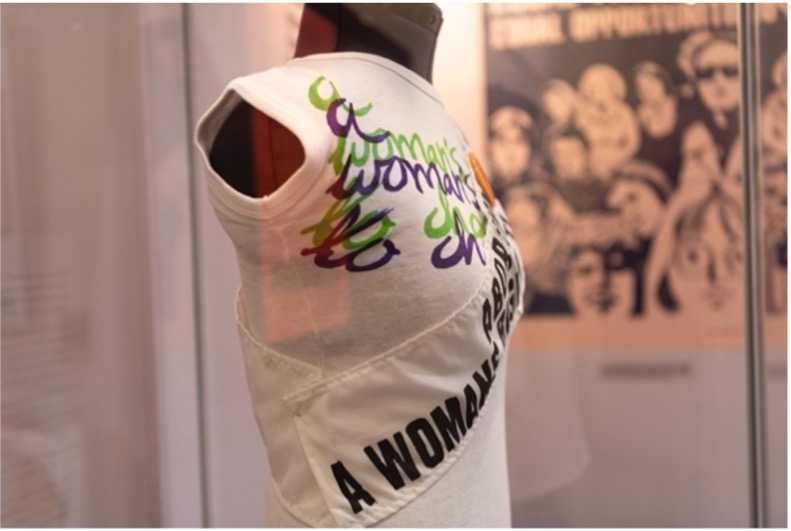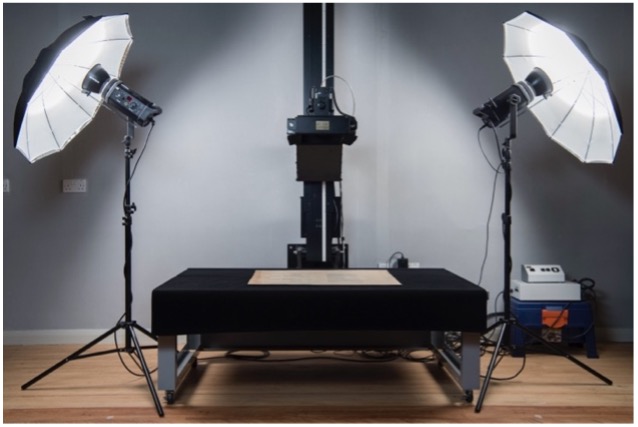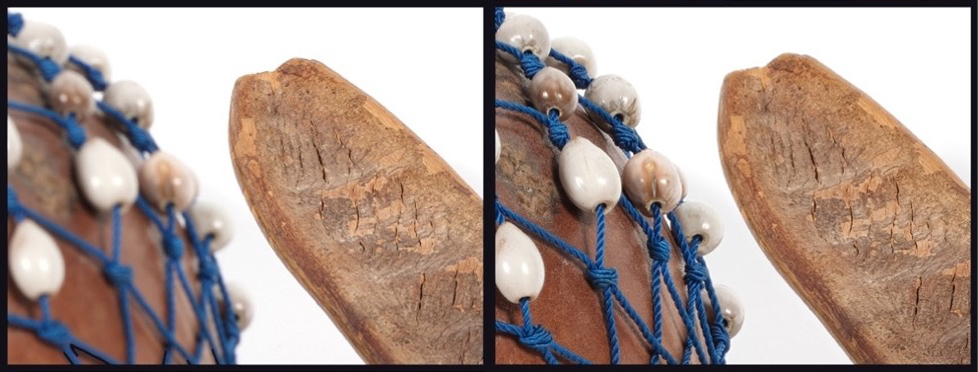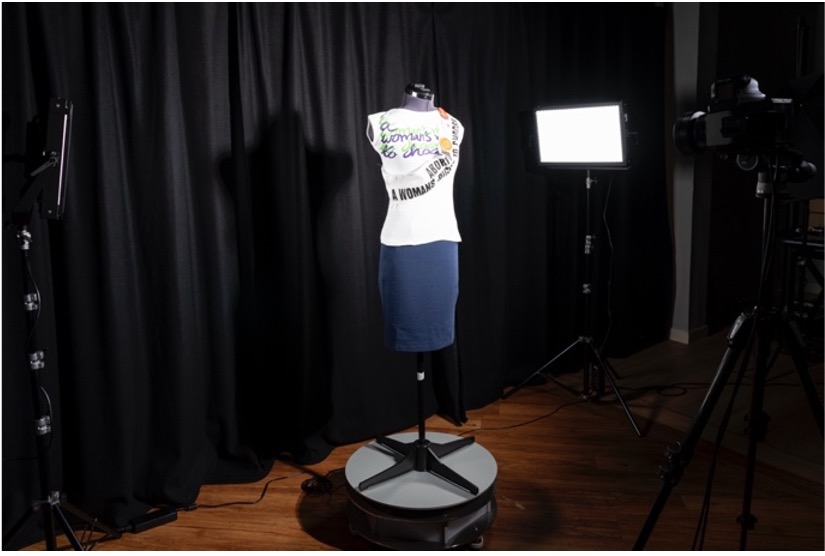August 27, 2024, by Mark Bentley
Photographing artefacts for the dear sisters exhibition
This blog post, written by Digitisation Assistant Catherine Martin, highlights the digitisation team’s role in preparing for a new exhibition.
Before an exhibition is installed in the Weston Gallery, the digitisation team at Manuscripts and Special Collections photograph every item which has been selected for display, to create images which can be used in publicity, on the exhibition boards, and in the large print gallery guide.
Most of the time this means photographing books or documents, but in recent weeks clothing, badges, musical instruments, vinyl records, and cassette tapes have all been brought to the studio to be photographed for dear sisters: activists’ archives, the exhibition currently on display at the Weston Gallery. This blog will look at the digitisation process and some of the techniques we used to capture images of these artefacts.
With any item that we photograph we want to create images that are as detailed, sharp, and accurate as possible. When photographing documents, we can position the camera close to the item and keep everything in focus because a page is relatively flat.
But with artefacts like musical instruments, the camera cannot focus across their whole depth at close range. This results in an image which is increasingly blurry on either side of the area in focus.
To work around this we took a series of photographs starting with the camera focused on the far edge of the instruments and moving forward to the nearest edge. The photographs were then combined or ‘stacked’ using specialist software to create a single image where everything is in focus. This allows us to show the shape and texture of each item without loss of detail.
When photographing clothing for the exhibition, we laid each piece flat and photographed it from above as we would a document. But we also wanted to show the clothes as they would have been worn and as they would appear in the gallery.
We arranged the t-shirt, sash, and skirt on a mannequin (referred to as a womannequin in the exhibition) and photographed them from multiple angles. We also used a turntable to rotate the mannequin and photograph it at 10o intervals to create a 360o animation which can be viewed below.
Once photography is complete, the digitisation team select and prepare images to keep in managed cloud storage for future use. The images also help to give exhibitions a longer life through the Manuscripts and Special Collections exhibition webpages.
Dear sisters: activists’ archives can be viewed at the Weston Gallery, Nottingham Lakeside Arts, until 1stSeptember 2024.
No comments yet, fill out a comment to be the first





Leave a Reply